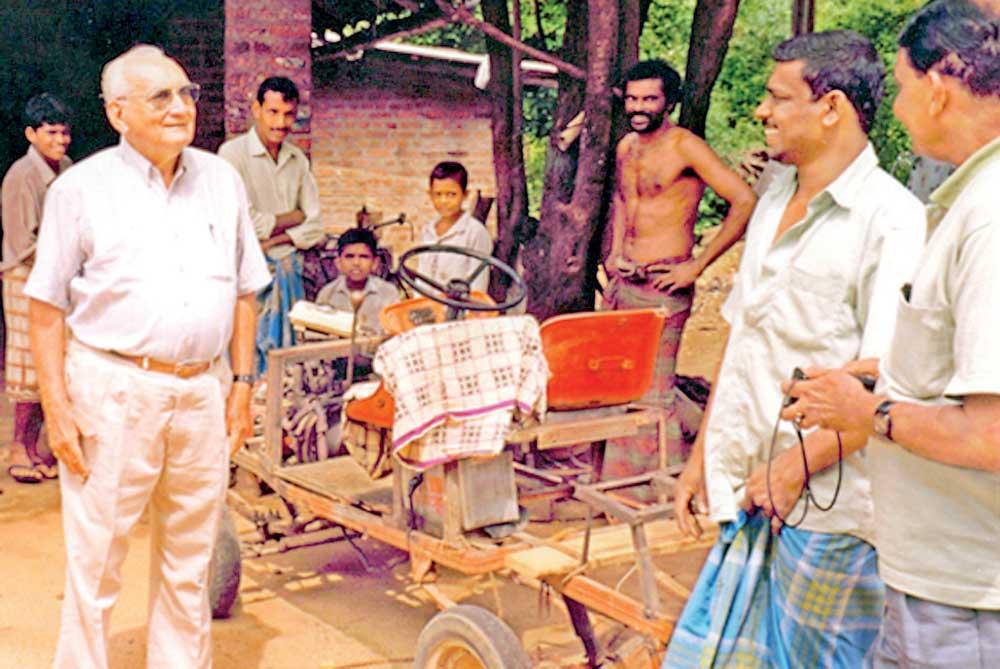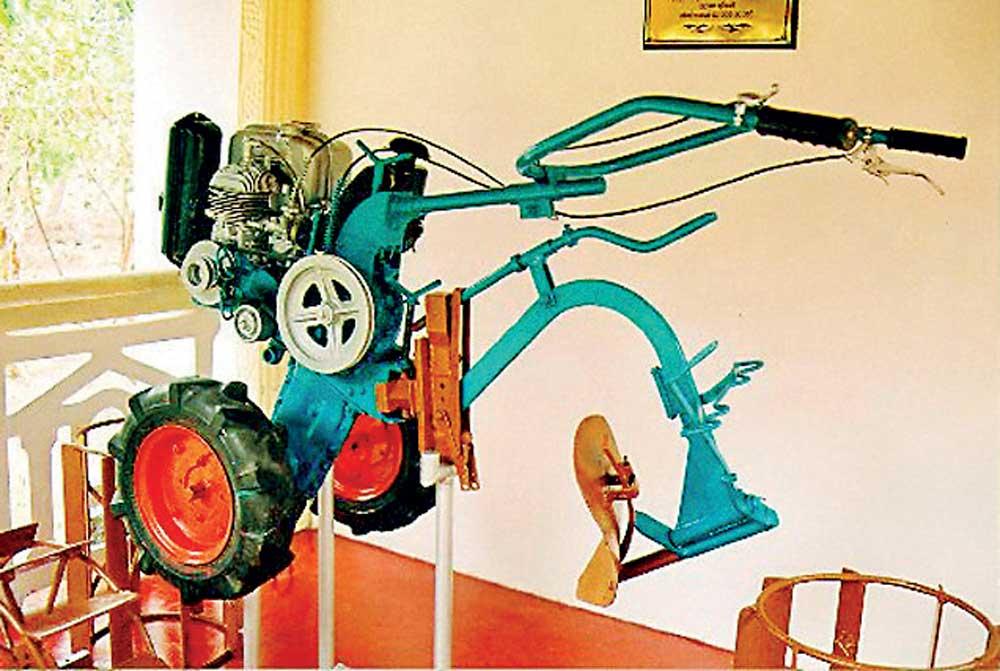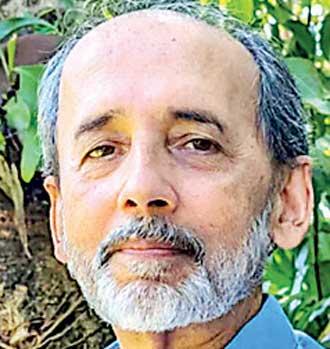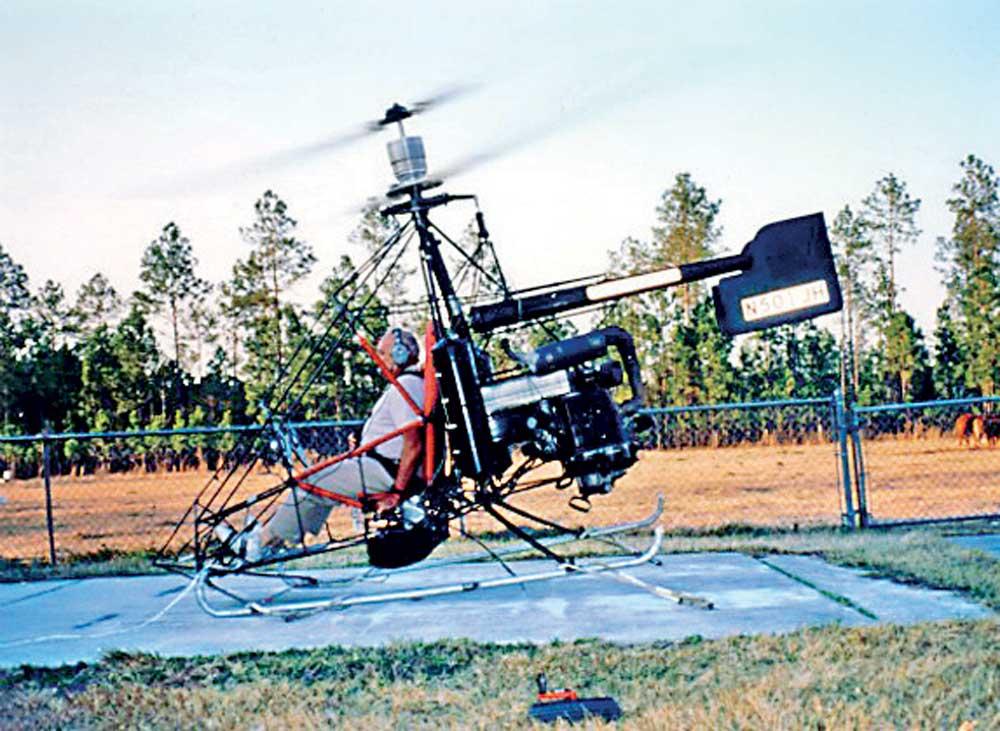20 Aug 2024 - {{hitsCtrl.values.hits}}
Birth Centenary of Dr. Ray Wijewardene |
|
The diary of an indefatigable ‘Renaissance Man’ |

Ray talking about agricultural machinery to staff at a farm in Anuradhapura
Images courtesy : www.raywijewardene.net
| To mark Dr. Ray Wijewardene’s birth centenary, a seminar to explore ‘The Potential of Hightech Innovation Economy’ will be held today (Tuesday) at the Trace Expert City
Ray thought ahead of time He was a great inspiration to everyone and would build his own planes from scratch His contribution to tropical agriculture had been of immense benefit to small scale farmers He was Chancellor of the University of Moratuwa from 2002 to 2007 The government awarded him the with Vidya Jyothi (Luminary of Science) and Deshamanya (Pride of the Nation) for distinguished public service Science writer Nalaka Gunawardene elaborates on how Ray asked many questions about how things worked and why, throughout his life Asita Tennekoon, a nephew, said that one of his (Ray’s) mottos was – ‘Don’t let even five minutes to pass without doing something’ The Annual Ray Wijewardene Memorial Lecture is a key activity that seeks to nurture innovation in Sri Lanka |
There is only so much that a human being could do in his entire lifespan. But Philip Revatha Wijewardene, fondly known as Ray, challenged the conventional capacities of a usual human being. Aptly described as a ‘Man for All Elements’, Ray’s life had been an extraordinary one. With more feathers than what a hat could possibly hold – as an aviator, scientist, sailor, inventor, coconut farmer, thinker, engineer, bio-energy promoter, Olympian, musician and oil painter- Dr. Ray Wijewardene had certainly been a master of all these trades. On the occasion of commemorating his birth centenary today (August 20), several individuals recalled their memories with him in a personal capacity, exploring his lesser-known talents, encounters with a man that they dared to look in the eye, his scientific vision and the legacy that is being carried forward.

Landmaster invention by Ray Wijewardene
An all-rounder par excellence
|
Ray seated in one of his aircrafts
|
“It wasn’t easy being his daughter,” said Anoma Wijewardene, one of Sri Lanka’s renowned contemporary artists. “He could do everything better. He had all the energy to try something new, all the time. My father was a ‘cool’, laid back kind of person and would spend much of his time on whatever that interested him,” reminisced Anoma.
She recalled how Ray had been a radical, ‘being half-white at a time when it was not acceptable’ in Anoma’s words. “He had to juggle between the English and Sinhalese ways of life,” she said while adding how Ray and his wife had to sail against the social tides to seal their relationship that had matured over time since their days in kindergarten.
Ray had been interested in ideas and he had loved the outdoors. “My father had no social skills, but was a very charming personality. He had no time for social chit-chats. But instead he would be in his study, obsessed with some kind of project. He was a ‘Renaissance Man’ and had a creative mind. He made use of a refrigerator cooler to invent a built-in A/C to his bed as he thought that there was no point in air conditioning an entire bedroom! That way, he thought a lot about saving energy and was looking for alternatives,” said Anoma.
Ray thought ahead of time. From rain-fed farming to agroforestry, Sloping Land Agriculture Technology (SALT) – a method to prevent soil erosion while rejuvenating the soil to field tests on dendro thermal power, Ray’s contribution to tropical agriculture had been of immense benefit to small scale farmers. “His training was in agriculture and research and worked for the UN Food and Agriculture Organisation (FAO) in Malaysia and the International Institute of Tropical Agriculture (IITA) in Ibada, Nigeria. As such, life was tough for Ray, but he was determined to give something back to the people,” she said.
Apart from the scientist, Ray was an accomplished violinist and oil painter. Anoma said, “He played the violin and the harp and I grew up with classical music all around me. On the other hand my father used to paint and much of his paintings were inspired by Cezzane”.
|

|
She believes that her father had been her inspiration to address climate change through her art. “I miss my conversations with him; there was adventure, exploration, reframing, rethinking something and always inspired us to think anew. My father lived to work rather than worked to live,” she added.
No ordinary man
|
Ray with his wife Seela De Mel
|
Ray’s youngest daughter Mandy recalled how the lights in his room would be switched on, even from as early as 4.00 am. “I would see him reading in his bed (whether it be some agricultural tome or some sailing or aviation journal - or even perhaps his favourite Jonathan Livingston Seagull - about a seagull who set out to be more than just an ordinary bird, by Richard Bach).
“I don’t think my father’s mind ever really switched off as such - his last words to me were from a physics theorem! I recall visiting Dad one morning only to find that he had happily converted his bed into a four poster. But this was no ordinary four poster - he had zipped himself into a see-through plastic casing which surrounded the bed at the end of which there was a fridge compressor unit hard at work. Thankfully he was still warm to the touch and not the frozen carcass I had rather feared to find. This was no ordinary household. And this was no ordinary man,” she added.
The sailor
Recalling one of his earliest memories with Ray, Asita Tennekoon, a nephew by blood spoke about his first sailing experience with Ray in Bolgoda. “He was looking for someone to man the two-man boat during a trip to Bolgoda. When he asked what I was doing I said I play cricket, but he was the least interested. “Cricket? What nonsense! Come with me to Bolgoda,” he said.
“I didn’t know what to do, but he asked me to pull this and that.” Tennekoon later joined the Royal Colombo Yacht Club where Ray was a life member.
Ray made history as the first Sri Lankan to participate in an Olympic sailing event. “He participated at the 1968 Olympics and won a silver medal in sailing at the 1970 Asian Games. He did anything to perfection and his motto was – ‘Don’t let even five minutes to pass without doing something’.

Ray trying out an autogyro
As such he was a great inspiration to everyone. He would build his own planes from scratch. “He built a light aircraft in his own garage and would take it to Ratmalana. Then he tried and tested new methods of agriculture, invented the two-wheel tractor. The landmaster became a household name, but unfortunately our people didn’t have the foresight to use the machine. This became a popular item for paddy cultivation and is now being used in the Far East. Nobody could do all these in a lifetime,” Tennekoon added.
Hero and role model
In one of his tributes to Ray, internationally acclaimed Biodiversity Scientist Dr. Rohan Pethiyagoda, stated the following: “As a member of the Ceylon Motor Yacht Club (CMYC) since 1950, Ray — “Uncle Ray” to my generation has been my personal hero ever since he taught me to sail in the late 1960s. Ray was the stuff of which teenage dreams are made, or at any rate, ought to be.”
Dr. Pethiyagoda recalled his earliest interactions with Ray as follows; “Sailing isn’t a mass-appeal sport in present-day Sri Lanka. It was even less so in 1971 when I, as a fifteen-year-old schoolboy, learned to sail at the Royal Colombo Yacht Club, then located in Colombo Harbour. The club’s membership was mostly European, with a smattering of Sri Lankans. Ray was then at the height of his fame, having won a Silver at the Bangkok Asian Games the previous year. As an aviator and inventor to boot, he was very much my hero and role model despite my never having dared to so much as make eye contact with the great man. He was among the few sailors to own a posh new Enterprise dinghy in those days of import controls and austerity. Having spotted me admiring his swish boat one day, he asked me whether I’d like to have a sail around with him. Would I! I was delighted thereafter when he took me under his wing, regularly picking me up from my home on Saturday afternoons on his Lambretta scooter; sometimes inviting me over to mess with the myriad gadgets, from model planes to telescopes that adorned his study. We became friends and he continued to be an influential guide and mentor throughout my life. Even now I catch myself unconsciously imitating ‘Uncle’ Ray in so many ways.”
Ray’s scientific vision
In a detailed explanation of Ray’s scientific vision, Science Writer Nalaka Gunawardene had this to say: “Ray Wijewardene was a rare visionary whose breadth of knowledge and wealth of practical experience created ‘bridges’ between different realms of knowledge, culture and society.
“He combined the analytical precision of a Western-trained scientist and engineer with the integrated and nuanced approach of an Eastern philosopher. As a farmer, Ray took the ‘toad’s eye view’ of ground level realities; as an aviator, he also had the ‘bird’s eye view’. This rare combination gave him unique perspectives, but his thinking kept evolving. He never stopped learning.”
Gunawardene elaborated on how Ray asked many questions about how things worked and why, throughout his life. “He wondered how things could be done better. His quest for answers took him to far corners of the world. He listened to experts and practitioners, always with an open mind. Where relevant, he adapted ancient wisdom and traditional knowledge, but demanded intellectual rigour and integrity when doing so. He avoided ideological and intellectual dogmas; he also did not romanticise or demonise anything. All this made him an uncommon public intellectual.
“After half a century of experimentation, exploration and reflection, he distilled everything he had learned to a simple concept of inter-connectedness of the four fundamental ‘elements’ of life – which, in Eastern traditions, are known as Ahpo (water/flowing), Thayjo (fire/heat), Vahyo (air/movement) and Patavi (matter/solidity),” said Gunawardene.
According to Gunawardene, Ray found that the equilibrium of these four elements formed an all-encompassing conceptual base for his life-long pursuits in engineering, aviation, agricultural innovation, energy and environmental sustainability. “In nature, these seemingly separate disciplines all blended. This was the basis of his personal logo that he conceptualised when he turned 75,” he further said.
The logo, designed by young engineer Asela Samaratunga, was later adopted by the Ray Wijewardene Charitable Trust as its official logo.
Carrying a legacy forward
In her tribute to this great personality written back in 2010, his niece, renowned Environmental Architect Sunela Jayewardene names him the ‘last Renaissance man’. He is even described as the ‘Leonardo Da Vinci’ of Sri Lanka. According to his website, as an aviator, Ray held the pilot licence to fly fixed-wing aircrafts, helicopters and autogyros. He served in various capacities such as Chairman of the Tea Research Board, head of the Inventors Commission and a member of several public sector bodies concerned with agriculture, science and technology. He was Chancellor of the University of Moratuwa from 2002 to 2007. The government of Sri Lanka awarded him the highest national honours of Vidya Jyothi (Luminary of Science) and Deshamanya (Pride of the Nation) for distinguished public service.
In an attempt to carry his legacy forward, the Ray Wijewardene Charitable Trust introduced ‘The Ray’, a lifetime honour awarded once every three years to help a recognised inventor to commercialise his or her invention. The Annual Ray Wijewardene Memorial Lecture is a key activity that seeks to nurture innovation in Sri Lanka. To mark his birth centenary, a seminar to explore ‘The Potential of Hightech Innovation Economy’ will be held today at the Trace Expert City from 6.00pm onwards.
26 Dec 2024 9 hours ago
26 Dec 2024 26 Dec 2024
26 Dec 2024 26 Dec 2024
26 Dec 2024 26 Dec 2024
26 Dec 2024 26 Dec 2024